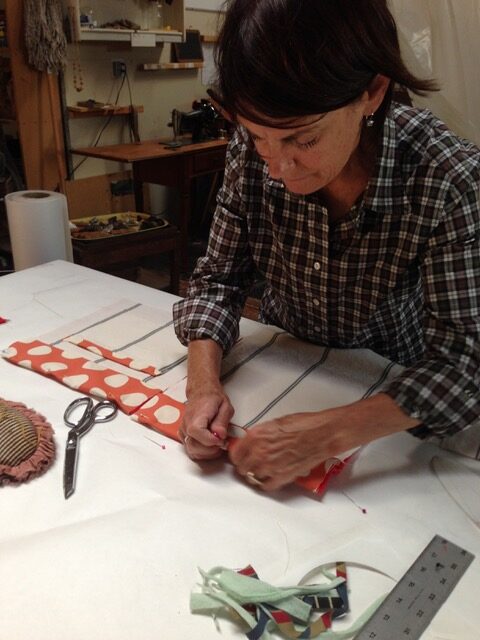
The first job where I was given free reign to do whatever I wanted, I worked in display for Macys. I was 25 years old and I remember thinking: ‘Whats the feel I want to create? Who’s the customer?’, yet the most concerning questions were: ‘What are my constraints? What can I do within them?’
After forty years of design work, the answers to these questions still prevail.
Often, the best advice I would give someone approaching me on solving a design dilemma, stems from the first constraint: how much can they comfortably afford? I want to share a few ideas around this subject.
First, people in general feel that interior designers spend a lot of their client’s budget on furnishings or on contractors building projects that may be undeterminable situations, quite extensive and often out of control. For this reason, a potential client might feel uncomfortable to answer the question: How much do you want to spend? Yet for the designer the answer sets a path to help, avoiding a mystery of how it all turns out and at what cost. Without knowing the budget, how can materials or the level of construction be considered? I can design something from a rudimentary level yet there is more chance of it changing, without a confirmed budget. It’s much easier to design with affordable materials and knowing the time that contractors will take to construct, than to wing it.
Before getting into the nitty-gritty of what is needed to make a project really work, I must consider two main components within the proposed budget. First, what aesthetics the client(s) appreciate and second, what functionality has to occur for them to live in the designed space and be happy. When an assessment of these two elements is not done, it’s like sailing against the wind. I have been in projects where I am not in control of money, where the contractor is in control or the clients attempt to manage the flow of costs, and it usually becomes quite complicated and messy somewhere during the building of the project. When this happens, at least one of the two components I’ve mentioned, hasn’t been addressed.
This doesn’t mean that a budget can’t change, because it usually does. Yet when you start with an idea of what you feel good in spending, it’s the designer’s job to stay earnest in producing a set of plans and an estimate within those guidelines. Then, the wind changes and the sails carry the project to the finish with ease.
Ok, let me attempt to be the client for a moment.
I imagine myself as you, the client, who is asked by the designer, “How much do you want to spend?”
I might be thinking “Well I’d really like to spend the least but what if she can do it for less than I suggest? Am I putting myself at a disadvantage?”
Perhaps you sincerely don’t know and you propose a figure lower than what you really could spend and after the design process, you begin to add to that budget. How might this work? It’s usually not difficult if these additions happen in the initial phase.
Then there is the question: “How long will the project take and how long is the designer engaged?” These are also part of the budget constraints and can only be answered in the context of whether the designer is acting as a project manager/designer, or whether the designer is strictly designing, giving you ideas and drawings.
I had a client back in the eighties who came to me and said “My partner and I are airline pilots. We have a work break coming up. We don’t have very much money to put into a venture but we met a wonderful chef, liked him and want to open a Japanese restaurant. How much will you charge us to design if we do all the building? So we went about building a restaurant with a budget of $10,000., my fees included. In the end it cost about $13,600. It was a very successful place for almost 3 1/2 years. The restaurant sold for $250k. The best part for me, was that Sasaki made the cover of Interior Design magazine.
If a designer is to manage a project, which is the case most of the time, I can only advise a tight working schedule to avoid extra costs. Sometimes penalties for delays work, if there is a lot of money involved. Most of the time it’s making sure there is a good relationship between all professionals and the client and hopefully a track record of the designer and contractor working together. I can’t urge clients enough: create a good working calendar of checkpoints. Just like when you were in school….you studied more when there was a test. In this case, the test is the completion of each step. Studying is doing the daily work of making sure materials are on site when needed and contractors show up when scheduled. Its a fine tuned system and certainly one that lives by the clock, especially if a
budget is to be regarded seriously.
Moral of this story: be conscious of estimating well in the beginning and understanding the design before beginning. Create checkpoints. But most important: know what you want to spend and see it laid out in a plan before proceeding. Good luck!